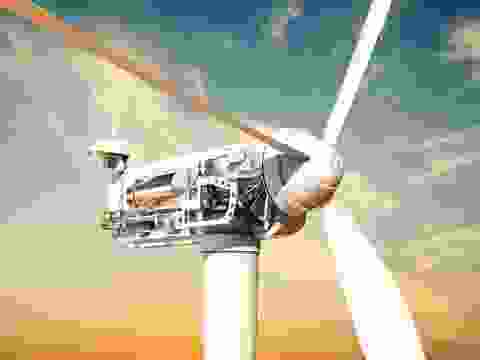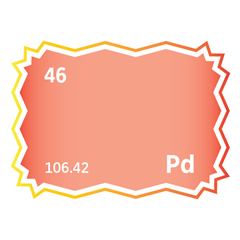Australia
Critical minerals, policy, and the energy transition
The Energy Transition in Australia
Australia is undertaking one of the most ambitious energy transitions of any advanced economy, positioning itself at the forefront of the global shift to renewables. With abundant energy and mineral resources, the country holds a powerful foundation for sustainable growth, economic resilience, and international influence. This transformation is deeply tied to Australia’s vast reserves of critical minerals—essential for clean energy technologies, advanced manufacturing, and modern defence systems. From solar panels and wind turbines to electric vehicles and hydrogen electrolysers, the path to net zero runs through the earth, and Australia is uniquely positioned to supply the minerals that will power the energy systems of tomorrow. At the same time, Australia faces complex challenges: ageing grid infrastructure, volatile investment cycles, political divergence over nuclear energy, and the urgent need for a skilled workforce. The Federal Government, alongside States and Territories, is responding through policy reform, innovation funding, and major infrastructure investment. A dual transformation is underway, building a globally significant critical minerals sector while reshaping the national energy system into one that is cleaner, smarter, and more resilient. We explore the legal and governance frameworks underpinning land and resource ownership, the strategic ambitions in national and state energy targets, and the technological innovations driving decarbonisation. From land tenure to lithium exports, solar farms to green hydrogen hubs, Australia’s transition is a story of opportunity, complexity, and global consequence.
Latest news and insights
Stay ahead in the energy transition with SFA (Oxford)’s cutting-edge insights into how lithium, rare earths, ESG strategy, and downstream investment are cementing Australia’s role as a global leader in critical minerals and clean energy supply chains.
Australia's international economic, trade, and security alliances
From Land Ownership to Renewable Superpower
Australia is undergoing a dual transformation—leveraging its vast mineral wealth and renewable energy potential to become a global leader in clean technologies. With a world-class minerals sector and ambitious energy transition policies, the nation is positioning itself as both a cornerstone of secure supply chains and a model of sustainable economic development. It's transformation is underpinned by two core pillars: robust governance of mineral resources, particularly critical minerals essential to clean technologies and defence, and an ambitious federal and state-led shift towards renewable energy. Together, they define Australia’s role in the global transition to net-zero.
Australia’s energy revolution is among the most ambitious in the world. With a legislated target of 82% renewable electricity by 2030 and a net-zero emissions commitment by 2050, the nation is leveraging its unparalleled solar, wind, and hydrogen resources to transform its energy landscape. Despite significant progress, this transition faces challenges including investment slowdowns, outdated grid infrastructure, and growing political debate over nuclear energy.
At the federal level, Australia has legislated a 43% reduction in greenhouse gas emissions by 2030, based on 2005 levels. The Renewable Energy Target (RET) aims to deliver 33,000 GWh of renewable electricity annually between 2020 and 2030. This target is supported by tradable certificates that incentivise investment in large-scale solar, wind, and hydroelectric projects.
Between 2005 and 2023, the share of renewables in electricity generation increased from 7.5% to over 30%. However, progress has slowed. In 2023, financial approvals for solar farms fell by over a third, and no new wind farms received investment backing, reducing annual construction starts from 72 to 56. Analysts now estimate that, at current rates, renewables will supply 50% of electricity by 2025 and 65% by 2030, short of the 82% target.
Australia’s decentralised system has enabled States and Territories to set their own, often more ambitious, energy goals:
-
South Australia generated 74% of its electricity from renewables in 2023 and aims to reach 100% by 2027. Its Hydrogen Jobs Plan includes a 250 MW electrolyser and a 200 MW hydrogen power station by 2026.
-
Victoria is targeting 40% renewables by 2025, supported by the development of offshore wind farms.
-
New South Wales launched a $290 million Consumer Energy Strategy to install rooftop solar and batteries in 1 million homes by 2035.


Source: SFA (Oxford)
Types of land ownership
Australia's land ownership is divided into two many tpes:
-
Freehold Land, which includes land held by traditional owner groups, such as Aboriginal and Torres Strait Islander communities.
-
Non-Freehold Land or Public Land and is commonly known as Crown land.
Irrespective of land classification, mineral resources are owned by the relevant State or Federal Government. Landowners do not automatically own the minerals beneath their property. Each State or Territory has constitutional responsibility for regulating mineral exploration and extraction within its jurisdiction, including granting licences and enforcing compliance with environmental and safety laws.
The Federal Government supports the minerals sector through national policy development, foreign investment regulation, and taxation frameworks. It does not participate directly in commercial exploration or development, leaving such activities to the private sector. However, it invests in geoscientific research and data via agencies such as Geoscience Australia, the Commonwealth Scientific and Industrial Research Organisation (CSIRO), and the Department of Industry, Science, Energy and Resources.
Offshore mineral resources are governed by the National Offshore Petroleum Titles Administrator (NOPTA), while onshore resources are managed by State and Territory governments, who regulate operations, ensure compliance with occupational health and safety laws, and collect royalties.
Strategic focus on Critical Minerals
In March 2019, the Australian Government launched its Critical Minerals Strategy with the goal of positioning Australia as a leading global supplier of the minerals essential to clean energy technologies, advanced manufacturing, and allied defence systems. The strategy includes:
-
Attracting foreign and domestic investment;
-
Encouraging innovation and downstream processing;
-
Aligning infrastructure development with mineral projects;
-
Building international partnerships.
A pivotal report by Geoscience Australia identified Australian deposits of minerals deemed critical by the European Union, the United States, and the United Kingdom, including lithium, rare earth elements (REEs), tungsten, cobalt, vanadium, and graphite. The strategy recognises that these materials are both vital to modern economies and vulnerable to supply disruption.
Through these measures, Australia seeks to ensure its mineral endowment translates into long-term economic resilience and strategic advantage in global supply chains.
Technological energy innovations and infrastructure
Solar and wind power
Australia is a world leader in per capita renewable energy deployment, having installed over 40 GW of solar and wind capacity since 2015. Rooftop solar is particularly successful, with more than 2 million homes contributing around 30 percent of renewable generation. However, utility-scale projects are increasingly delayed by grid congestion and complex planning processes.
The Australian Energy Market Operator (AEMO) estimates that an additional 10 GW of solar and wind capacity will be added by 2025, but warns that transmission constraints could limit their effectiveness.
Despite strong policy frameworks, renewable energy investment fell by 30 percent in 2023 due to supply chain disruptions, labour shortages, and delays in transmission infrastructure. No new wind projects were approved that year, raising concerns about meeting 2030 targets. The planned closure of major coal plants, such as the 2.9 GW Eraring facility by 2028, could lead to energy shortfalls in New South Wales and Victoria without the urgent deployment of replacement generation capacity.
Since 2015, renewable energy has already cut electricity sector emissions by 30 percent, avoiding more than 200 million tonnes of CO₂. By 2025, annual reductions could reach 75 million tonnes, equivalent to eliminating emissions from all Australian cars and planes.
Battery storage and grid flexibility
Grid-scale energy storage is essential to manage intermittent renewable supply. South Australia’s Hornsdale Power Reserve—the world’s first 150 MW battery—has reduced grid instability costs by 90%, proving the viability of large-scale batteries.
Nationwide, 2.9 GW of utility battery capacity is scheduled for installation by 2025, alongside pumped hydro projects such as Snowy 2.0. Market design reforms by the Australian Energy Market Commission (AEMC) aim to increase grid flexibility and distributed energy integration.
While renewables reduce wholesale energy prices, investments in storage and transmission infrastructure can increase household bills. However, solar and battery incentives—such as New South Wales’ $3,000 rebate—help mitigate this, with 4 million solar-equipped homes saving an average of $600 per year.
Green hydrogen
Australia plans to become a global green hydrogen superpower, targeting $89 billion in exports by 2040. Projects like Hydrogen Park South Australia (HypSA) already blend 5% hydrogen into local gas networks, while the Eyre Peninsula Gateway Project aims to produce 40,000 tonnes of ammonia per year from a 75 MW electrolyser.
Hydrogen has vast potential for decarbonising heavy industry and transport but faces cost and scalability barriers.
Nuclear energy
The upcoming 2025 federal election has sharpened debate over energy policy. The opposition Liberal-National Party (LNP) proposes developing 13 GW of nuclear capacity by 2051, arguing it is essential for reliability. The Labor Government, in contrast, remains focused on renewables. Analysts warn that both pathways face obstacles: Labor’s plan may fall 17% short of the 82% target, while nuclear projects face decade-long lead times and public resistance.
Critical Minerals in Australia
Australia's energy and power mix
Ceased Critical Minerals produced in Australia
Energy Raw Materials and products produced in Australia
Essential minerals production and products in Australia
Overseas territories of Australia
The journey of Australasia's critical minerals
Australasia's shift towards renewable energy and sustainability is fundamentally supported by its wealth in critical minerals such as lithium, nickel, cobalt, and rare earths among others, crucial for low-carbon technologies and future innovations. Emphasizing sustainable mining and innovative policies, this strategy mirrors global efforts, notably in North America and Europe.




Meet the Critical Minerals team
Trusted advice from a dedicated team of experts.

Henk de Hoop
Chief Executive Officer

Beresford Clarke
Managing Director: Technical & Research

Jamie Underwood
Principal Consultant

Ismet Soyocak
ESG & Critical Minerals Lead

Rj Coetzee
Senior Market Analyst: Battery Materials and Technologies

How can we help you?
SFA (Oxford) provides bespoke, independent intelligence on the strategic metal markets, specifically tailored to your needs. To find out more about what we can offer you, please contact us.











































































































